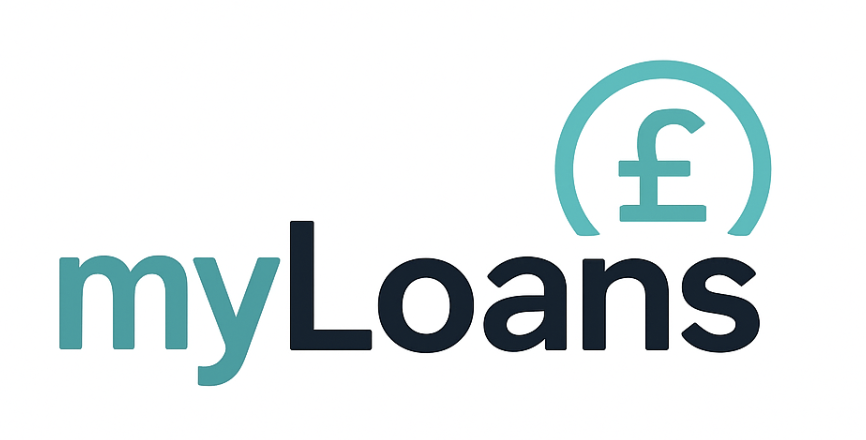Table of Contents
Introduction: When Home Repairs Can’t Wait
From leaking roofs and broken boilers to electrical faults or storm damage, home repairs are often urgent and unavoidable. In the UK, the average household spends £3,000–£5,000 a year on maintenance and unexpected fixes.
But when savings fall short, many homeowners turn to a home repair loan — a type of personal loan designed to spread the cost of essential repairs.
This guide covers everything you need to know about home repair loans in the UK in 2025: what they are, who offers them, typical costs, pros and cons, and safer alternatives.
What Is a Home Repair Loan?
A home repair loan is simply a personal loan used to cover property repair expenses. Lenders don’t usually restrict what type of repair you use the funds for, but common examples include:
-
Boiler replacement or central heating upgrades
-
Roof, guttering, or damp proofing repairs
-
Electrical rewiring or safety fixes
-
Plumbing emergencies (burst pipes, bathroom repairs)
-
Window or door replacements
-
Fire, flood, or storm damage repairs
How Do Home Repair Loans Work?
-
Application: With a bank, online lender, or credit union.
-
Approval: Based on credit score, income, and affordability.
-
Funding: Money released into your account (sometimes same day).
-
Repayment: Fixed instalments, usually over 1–7 years.
Example:
-
£4,000 boiler replacement loan at 9.9% APR over 3 years = ~£129/month, total repayable ~£4,644.
Typical Loan Amounts and Rates
-
Loan amounts: £1,000–£25,000 unsecured (more if secured).
-
Repayment terms: 1–7 years.
-
Rates:
-
Good credit: 6%–10% APR
-
Average credit: 12%–20% APR
-
Poor credit: 20%–49% APR
-
Who Offers Home Repair Loans in the UK?
-
High Street Banks: Tesco, Sainsbury’s, M&S, Nationwide, Lloyds, TSB
-
Online Lenders: Zopa, Lendable, Admiral, Likely Loans
-
Credit Unions: Community lenders, more accessible for lower credit scores
-
Guarantor Loans: For those with poor credit needing larger sums
Pros and Cons of Home Repair Loans
Pros
-
Immediate access to funds for urgent work
-
Fixed repayments make budgeting easier
-
Can cover both planned and emergency repairs
-
Cheaper than credit cards or payday loans
Cons
-
Adds debt on top of homeownership costs
-
Interest increases total repair costs
-
Poor credit means much higher APRs
-
Secured loans risk repossession if payments missed
Alternatives to Home Repair Loans
-
Home insurance claims: Check if your policy covers the repair.
-
0% credit cards: For smaller, manageable costs.
-
Savings: Cheapest option if available.
-
Government/local council grants: Sometimes available for low-income households (e.g. energy efficiency, safety upgrades).
-
Credit unions: Lower rates and ethical lending compared to subprime lenders.
Worked Examples
Example 1 – Boiler Replacement (£3,500)
-
Loan: £3,500 at 8.9% APR over 3 years = ~£111/month
-
Total repayable ~£3,996
Example 2 – Roof Repairs (£7,000)
-
Loan: £7,000 at 10.9% APR over 5 years = ~£151/month
-
Total repayable ~£9,060
Example 3 – Emergency Plumbing (£1,200)
-
0% credit card for 12 months = £100/month, no interest if cleared in time
How to Budget for Home Repairs
-
Get multiple quotes from contractors before borrowing.
-
Add a contingency buffer of at least 10% for overruns.
-
Match loan term to repair lifespan (don’t repay for 7 years on a boiler with 5-year warranty).
-
Check insurance first — some emergencies may already be covered.
-
Consider partial savings + smaller loan to minimise debt.
FAQs
Q: Can I get a home repair loan with bad credit?
Yes — but APRs will be higher. Credit unions or guarantor loans may be better than payday loans.
Q: Are repairs covered by insurance?
Sometimes — check your policy. Structural issues or wear-and-tear often aren’t.
Q: Can landlords take home repair loans?
Yes, most lenders allow loans for rental property repairs.
Q: What’s the fastest way to cover emergency repairs?
Online lenders or credit unions (if already a member) offer same-day funding.
Conclusion: Fix Now, Pay Smart Later
A home repair loan in the UK can be a lifeline when unexpected damage or breakdowns strike. By spreading costs over manageable instalments, you can act quickly without draining savings.
But as with all borrowing, compare rates, check insurance and grant options first, and borrow only what you truly need. The right loan keeps your home safe and functional — without creating long-term financial strain.
Personal Loan Debt Consolidation UK – Is It Right for You?
Juggling multiple credit cards, overdrafts, or loans can be stressful and expensive. A debt consolidation loan allows you to combine everything into a single monthly repayment, often at a lower interest rate. In 2025, UK lenders from high street banks to online...
Emergency Loans UK – How to Borrow Fast in 2025
When an urgent expense hits — like car repairs, medical bills, or a broken boiler — quick access to funds can be essential. In 2025, emergency loans in the UK provide a way to borrow fast, with some lenders offering same-day decisions and payouts. This guide explains...
Top 10 Personal Loan Providers UK 2025 – Rates, Features & Eligibility
The UK personal loan market in 2025 offers more choice than ever, with banks, supermarkets, online lenders, and credit unions all competing for borrowers. The best deal for you depends on your credit score, loan size, and repayment term — but comparing providers side...
Best Debt Consolidation Loans UK 2025 | Top Options
Managing multiple debts can feel overwhelming, especially with credit cards, overdrafts, and personal loans all charging different interest rates. A debt consolidation loan can simplify your finances by rolling everything into one fixed monthly repayment — often at a...
Best Bad Credit Loans UK 2025 – Top Lenders Compared
Having a poor credit score, CCJs, or past defaults doesn’t mean borrowing is out of reach. In 2025, several UK lenders specialise in products designed for people with bad credit — offering smaller loans, flexible repayment terms, and eligibility checks that won’t harm...
Green Energy Loans UK – How to Finance Eco-Friendly Home Improvements in 2025
Eco-friendly upgrades such as solar panels, insulation, heat pumps, and EV chargers can cut energy bills and boost property value — but they require a significant upfront investment. In 2025, green energy loans in the UK provide a way to spread the cost of sustainable...
Moving House Loans UK – How to Cover Relocation Costs in 2025
From deposits and removal vans to solicitor fees and new furniture, moving house in the UK can quickly add up to thousands of pounds. Not everyone has savings set aside to cover these costs upfront. In 2025, moving house loans in the UK provide a way to spread...
Education Loans UK – How to Fund Studies and Professional Courses in 2025
Not all education in the UK is covered by government student finance. Postgraduate degrees, professional qualifications, and private training often require self-funding — with tuition fees and course costs running into thousands of pounds. In 2025, education loans in...
Holiday Loans UK – How to Spread the Cost of Travel in 2025
Holidays can be some of the most rewarding experiences of the year, but they often come with a price tag that’s hard to cover upfront. From flights and hotels to all-inclusive packages and once-in-a-lifetime trips, the costs can add up quickly. In 2025, holiday loans...
Best Personal Loans UK 2025 – Top Lenders Compared
The UK personal loan market in 2025 is more competitive than ever, with high street banks, supermarkets, online lenders, and credit unions all offering products to suit different needs. Choosing the right provider can save you hundreds in interest and ensure...
Medical Loans UK – How to Finance Healthcare Costs in 2025
While the NHS covers most essential treatment, waiting lists, private care, and specialist procedures mean many people face out-of-pocket medical expenses. From dental work and fertility treatment to cosmetic surgery and urgent private healthcare, costs can run into...
Car Loans UK – Personal Loan vs Hire Purchase vs PCP in 2025
Buying a car in 2025 usually means more than just choosing the right vehicle — it also means deciding how to pay for it. In the UK, the three main options are a personal loan, hire purchase (HP), or personal contract purchase (PCP). Each has its own advantages,...
Home Improvement Loans UK – How to Finance Renovations in 2025
Planning a new kitchen, loft conversion, or energy-efficient upgrade can transform your home’s value and comfort — but the upfront costs are often daunting. In 2025, home improvement loans in the UK provide a way to spread renovation expenses into affordable monthly...
Bad Credit Personal Loans UK 2025 | Complete Borrowing Guide
Defaults, CCJs, or missed payments don’t have to shut you out of borrowing. In 2025, UK lenders still offer options for people with less-than-perfect credit — from credit unions and guarantor providers to online specialists. This guide explains how bad credit personal...
How to Use a Personal Loan Calculator to Plan Your Borrowing
A personal loan calculator is one of the easiest ways to understand what a loan will really cost you. By entering the amount you want to borrow, the interest rate, and the repayment term, you can see your monthly repayments and the total cost over time. This simple...

















